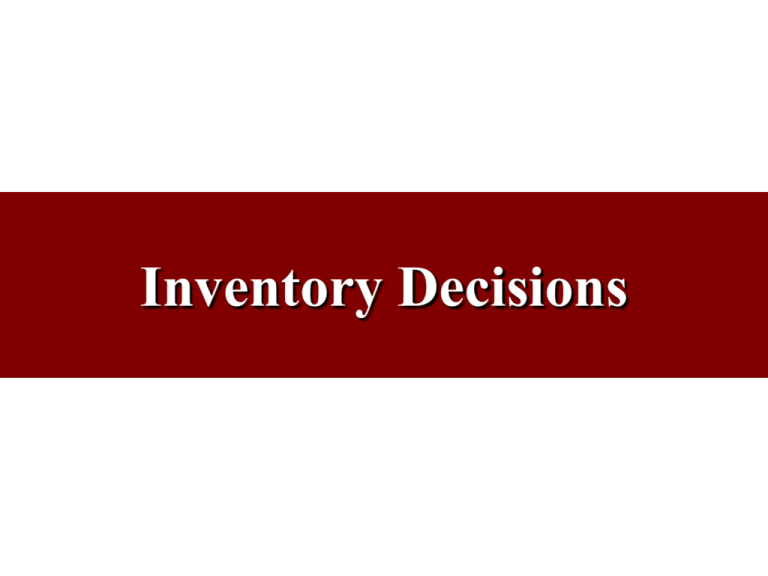
Remember that inventory is generally categorized as raw materials, work-in-progress, and finished goods. The IRS also classifies merchandise and supplies as additional categories of inventory. Company management, analysts, and investors can use a company’s inventory turnover to determine how many times it sells its products over a certain period of time. Inventory turnover can indicate whether a company has too much or too little inventory on hand. As noted above, inventory is classified as a current asset on a company’s balance sheet, and it serves as a buffer between manufacturing and order fulfillment.
Best Inventory Optimisation Techniques
This type of inventory only applies to businesses that manufacture products. For a business that buys and sells finished products, there is no manufacturing involved and no raw materials. Ideally, you want to keep enough inventory on hand to meet customer demand. At the same time, it’s important to avoid holding too much inventory, which can lead to high storage costs and negatively impact your cash flow. Inventory is the total amount of goods that an ecommerce brand has available to sell.
Decoupling Inventory
BlueCart, for example, provides historical sales data from all your buyers. That allows you to gauge how demand varies over the long term and put in place accurate anticipation stock. That’s why anyone managing inventory builds in their own little insurance. You can learn how to calculate your pipeline stock by clicking the above link to our detailed post on the topic. And once you do, it’ll allow you to start optimizing inventory management.
What Is Inventory?
Inventory accounting is the task of valuing and reporting on the inventory held by a business. It’s a critical part of running a product business as it’s necessary both for accurate tax calculations and to gain financial visibility across the company. Like ABC analysis, this process can be relatively simple to implement, making it a useful starting point for any business looking to improve inventory planning.

In the cupcake example, the raw materials would be sourced from a supplier rather than manufactured by the business. Consider a fashion retailer such as Zara, which operates on a seasonal schedule. Because of the fast fashion nature of turnover, Zara, like other fashion retailers is under pressure to sell inventory rapidly. Zara’s merchandise is an example of inventory in the finished product stage. On the other hand, the fabric and other production materials are considered a raw material form of inventory.
Cycle
Understanding the various types of inventory—raw materials, work-in-process, finished products, and MRO supplies—is fundamental for any business involved in manufacturing and logistics. Effective inventory control and management ensure that companies can meet customer demand efficiently while maintaining optimal inventory levels. SKU rationalisation involves reviewing and reducing low-performing or redundant products, streamlining inventory management and focusing on high-demand items.
Proper inventory classification makes tracking inventory less stressful with properly labeled and stored items that you can prioritize and move efficiently to your customer’s doorstep. Properly managing your inventory can make or break your business, so here are two critical best practices all businesses can utilize to keep will the 2022 income tax season be normal their warehouses running efficiently and profitably. Throughout the fiscal year, properly classifying inventory enables a business to do cycle counts and create accurate reports for more efficient operations. Inventory audits are never fun, whether monthly, quarterly, or yearly, but classification makes them less painful.
The most important thing is to find an inventory management system that works well for you. Then, you can work out the best way to treat your inventory, either in groups or separately. Businesses need to know what type of inventory they’re dealing with so they can manage it properly. This can help you work out how much you spend in different areas and optimize production to boost profitability. The number of finished goods you have in stock will depend on many factors, including your inventory management methods.
- For successful inventory optimisation, businesses should implement key best practices.
- With good monitoring, tracking, and control, you can allocate certain types of inventory to protect against supply-and-demand uncertainties, low delivery reliability, and poor-quality components.
- The answer will depend on the frequency and amount of inventory that flows through your business.
- In this insightful blog post, we delve into the various categories of inventory and unlock effective inventory management techniques for each one.
Still, as a category, it’s often overlooked when it comes to inventory control. VMI inventory is owned by the vendor but stored at the buyer’s premises. The vendor and buyer then agree on the specifics and goals of the agreement.
Properly tracking this type of inventory is also helpful for assessing the production process itself. You can track metrics like speed and frequency of production and use the data for more accurate forecasting. The term inventory refers to the raw materials used in production as well as the goods produced that are available for sale.
